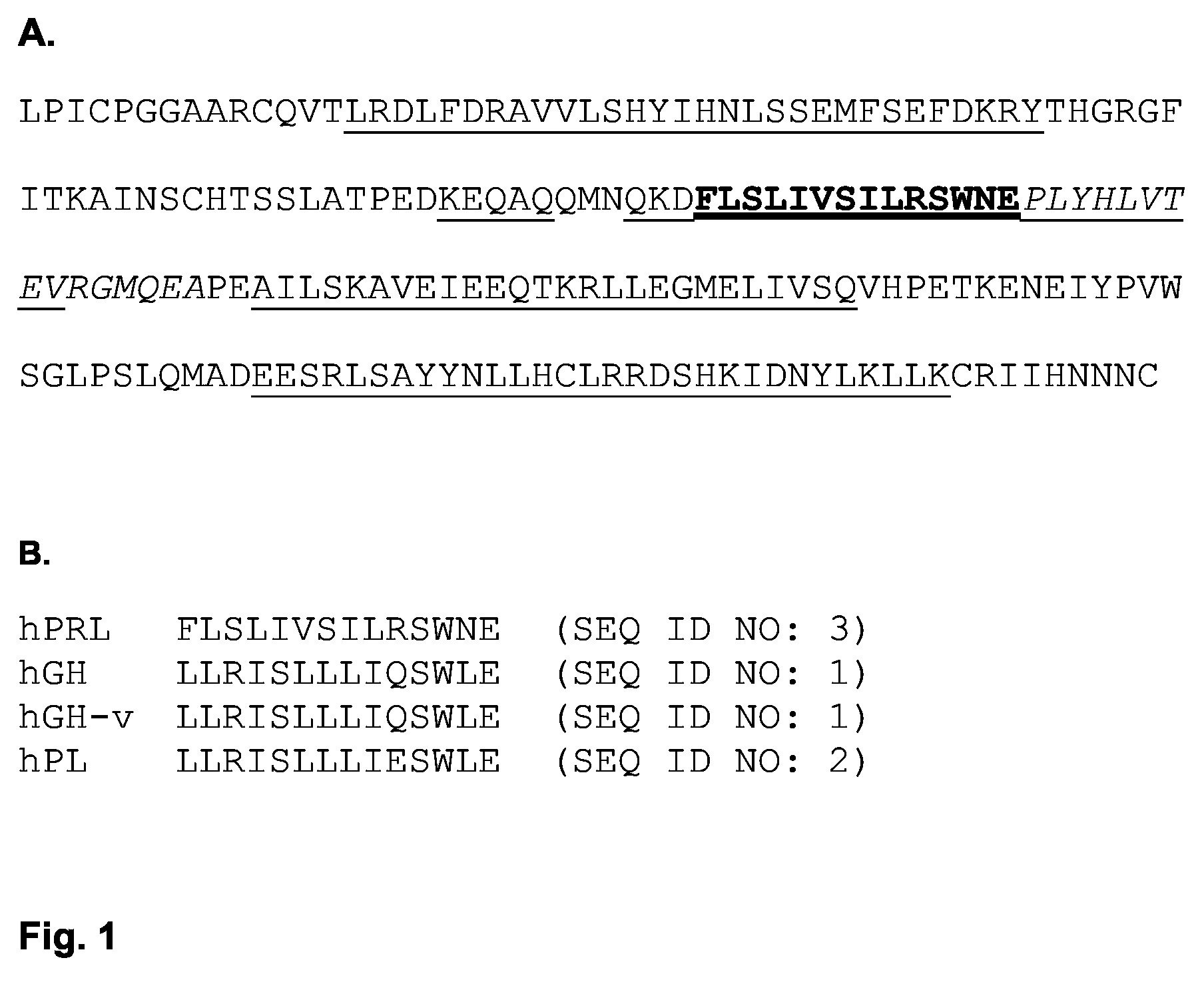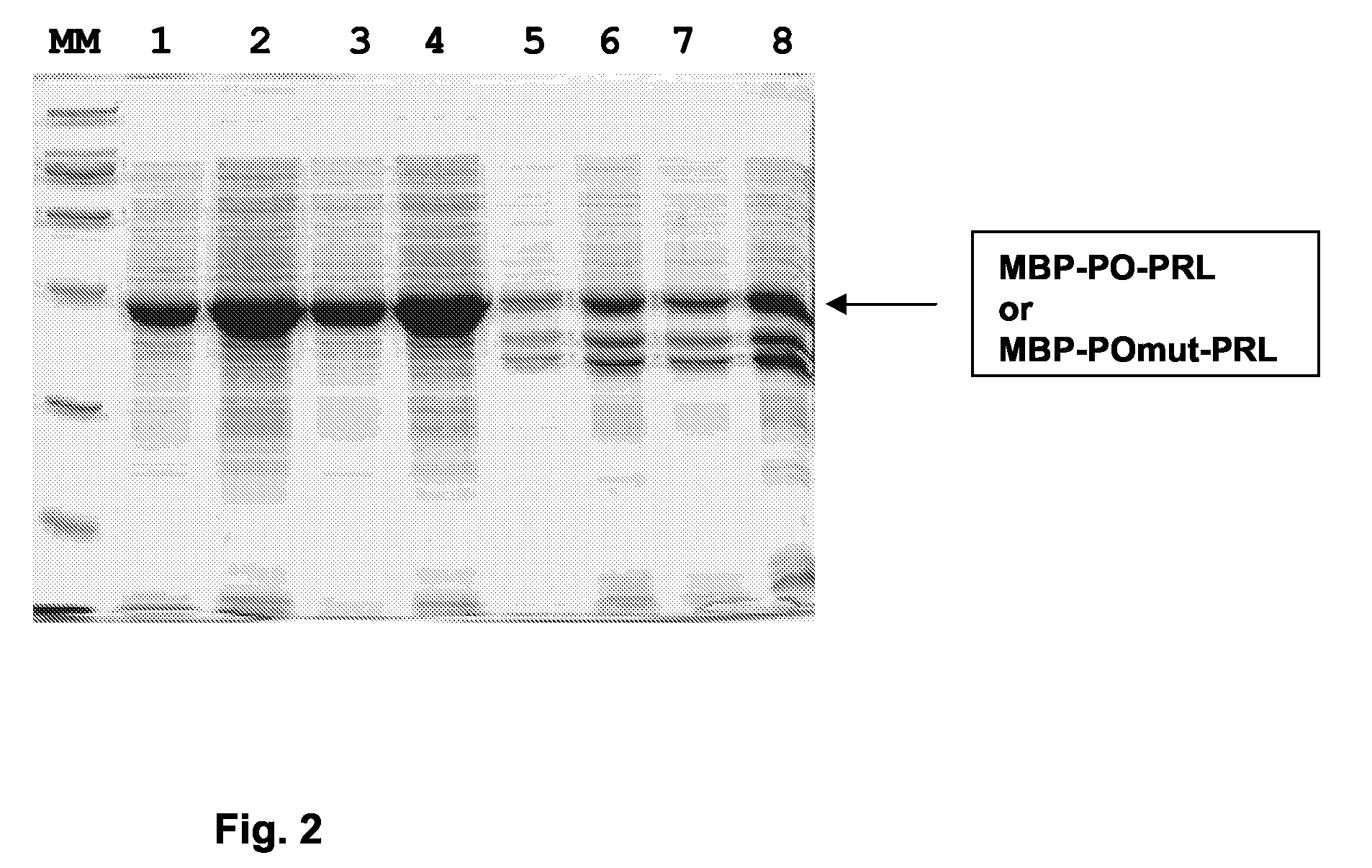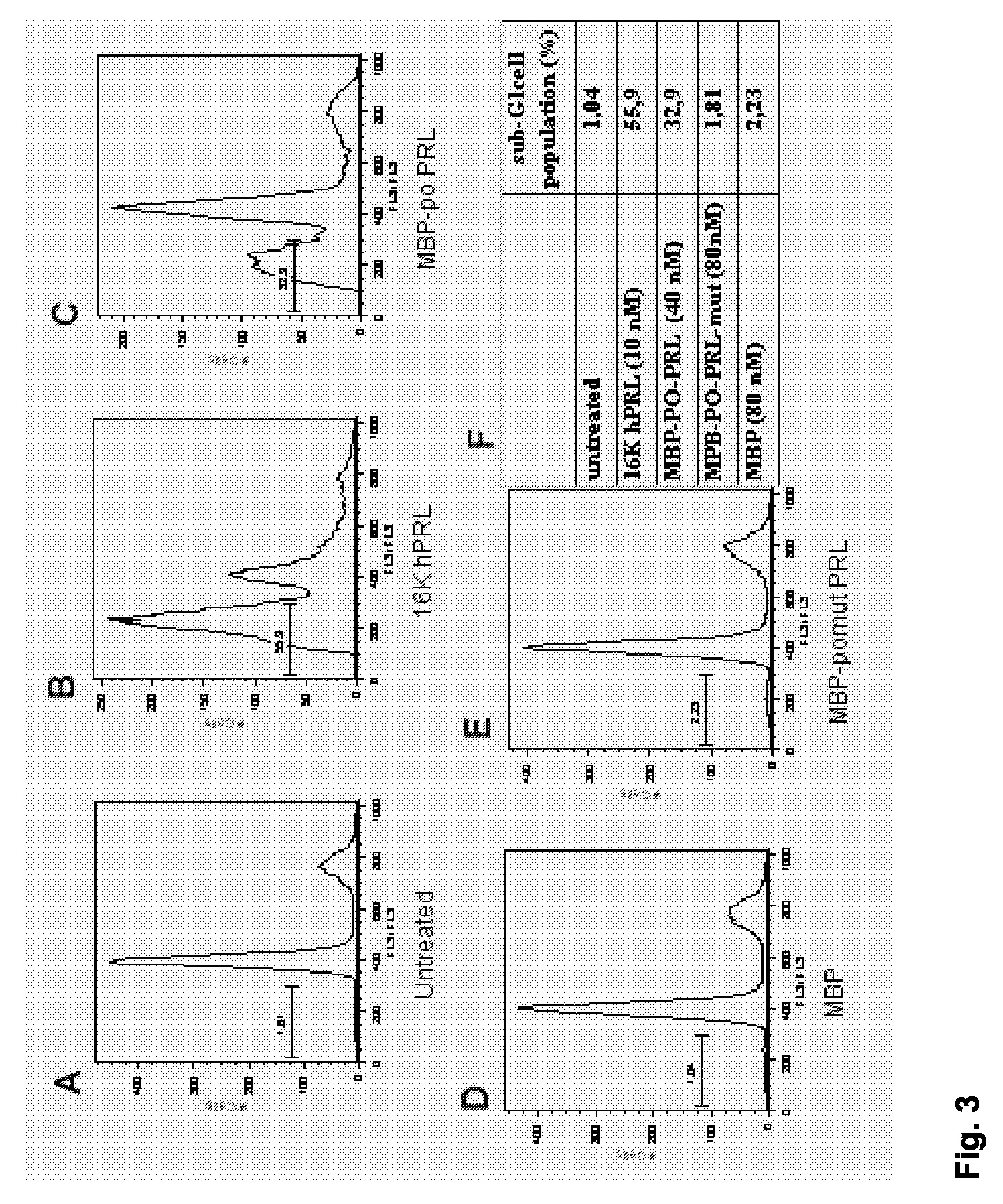Antiangiogenic peptides
a technology of antiangiogenic peptides and peptides, which is applied in the direction of depsipeptides, peptide/protein ingredients, viruses, etc., can solve the problems of difficult purification and difficult production of longer polypeptides
- Summary
- Abstract
- Description
- Claims
- Application Information
AI Technical Summary
Benefits of technology
Problems solved by technology
Method used
Image
Examples
example 1
Identification of a Tilted Peptide Region in the PRL / GH 16K Fragments
[0244]A general procedure of molecular modelling was set up that allows the detection of tilted peptides in a given protein sequence (Brasseur, R. Mol Membr Biol 17:31-40 (2000)). Briefly, tilted peptides are detected in a protein sequence using the following criteria: a) the peptide is 10 to 20 amino acids long, b) the mean hydrophobicity of the peptide (as calculated by the Eisenberg scale consensus scale in Eisenberg, D, Weiss, R, Terwillinger, T 1982, Nature, 299, 371-374) is higher than 0.1; c) the hydrophobicity along the sequence is analyzed using different methods such as the Jähnig and Hydrophobic Cluster Analysis methods (Gaboriaud, C., et al. FEBS Lett 224:149-55 (1987), Jahnig, F. Trends Biochem Sci 15:93-5 (1990)); d) when the peptide is built as a α helix, the angle between the helix axis and the interface plane is between 30° and 70° e) the minimal energy conformation is oriented at the hydrophobic / h...
example 2
Chemical Synthesis of Peptides
[0247]2.1. Synthesis of the PO-PRL Peptide
[0248]The peptide named PO-PRL corresponding to the tilted peptide region of the 16K hPRL was chemically synthesized. The sequence is FLSLIVSILRSWNE (SEQ ID NO: 3). This peptide was synthesized by the Eurogentec S.A., a private biotech company. The peptide has its N terminus acetylated and C terminus amidated.
[0249]2.2. Biophysical Characterization of Tilted Peptides: Lipid Phase Fusion
[0250]Lipid phase fusion was measured by following the fluorescence of a liposoluble marker, R18. When incorporated into liposomes at a high surface density, R18 fluorescence is attenuated. Upon dilution of the marker through membrane fusion of labeled and unlabeled liposomes, the attenuation is relieved and R18 fluorescence increases. Labeled liposomes were prepared by blending R18 into the lipid film (see table 1). Labeled and unlabeled liposomes were mixed in a 1:4 ratio (w / w) and diluted to a concentration of 50 μM. Fluorescen...
example 3
Determination of the Antiangiogenic Activity of the Tilted Peptide of 16K hPRL Fused to the MBP Protein
[0264]3.1. Expression of MBO-PO-PRL and MBP-POmut-PRL Recombinant Fusion Proteins
[0265]The tilted peptide fused to the “maltose binding protein” (MBP) was produced by a recombinant DNA technology approach. The gene encoding the fusion protein made of MBP with the tilted peptide of 16K hPRL was constructed as follows and named MPB-PO-PRL. As a control, mutations that modify the hydrophobic distribution were introduced in the tilted peptide of the 16K hPRL. These mutations modify the oblique orientation of the peptide when oriented at a lipid water interface. The modification of the PO sequence consists in the permutation of Leu2 and Asn13 and of Val6 and Ser 11. The gene encoding the fusion protein made of MBP with the mutated tilted peptide of 16K hPRL was constructed as follows and named MPB-POmut-PRL. The sequences of the peptides are:
[0266]
PO of 16K hPRL:FLSLIVSILRSWNE(SEQ ID NO...
PUM
| Property | Measurement | Unit |
|---|---|---|
| angle | aaaaa | aaaaa |
| angle | aaaaa | aaaaa |
| pH | aaaaa | aaaaa |
Abstract
Description
Claims
Application Information
 Login to View More
Login to View More - R&D
- Intellectual Property
- Life Sciences
- Materials
- Tech Scout
- Unparalleled Data Quality
- Higher Quality Content
- 60% Fewer Hallucinations
Browse by: Latest US Patents, China's latest patents, Technical Efficacy Thesaurus, Application Domain, Technology Topic, Popular Technical Reports.
© 2025 PatSnap. All rights reserved.Legal|Privacy policy|Modern Slavery Act Transparency Statement|Sitemap|About US| Contact US: help@patsnap.com



